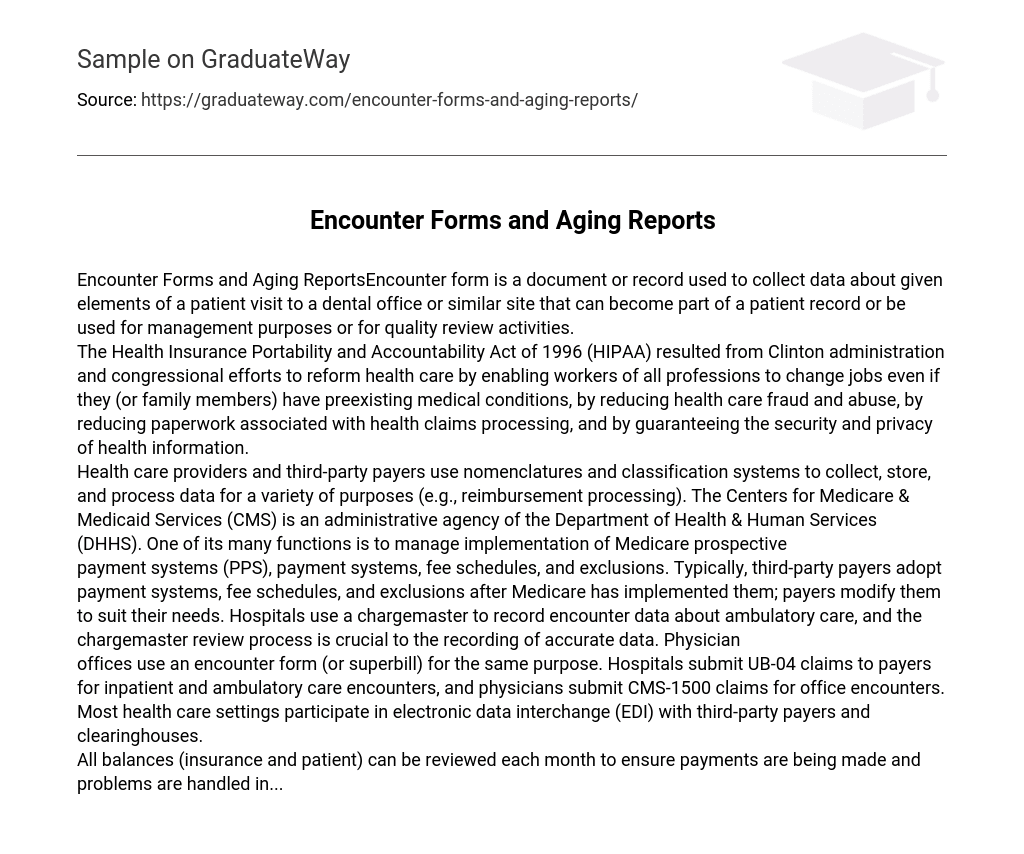Encounter form is a document or record used to collect data about given elements of a patient visit to a dental office or similar site that can become part of a patient record or be used for management purposes or for quality review activities.
The Health Insurance Portability and Accountability Act of 1996 (HIPAA) resulted from Clinton administration and congressional efforts to reform health care by enabling workers of all professions to change jobs even if they (or family members) have preexisting medical conditions, by reducing health care fraud and abuse, by reducing paperwork associated with health claims processing, and by guaranteeing the security and privacy of health information.
Health care providers and third-party payers use nomenclatures and classification systems to collect, store, and process data for a variety of purposes (e.g., reimbursement processing). The Centers for Medicare & Medicaid Services (CMS) is an administrative agency of the Department of Health & Human Services (DHHS). One of its many functions is to manage implementation of Medicare prospective
payment systems (PPS), payment systems, fee schedules, and exclusions.
Typically, third-party payers adopt payment systems, fee schedules, and exclusions after Medicare has implemented them; payers modify them to suit their needs. Hospitals use a chargemaster to record encounter data about ambulatory care, and the chargemaster review process is crucial to the recording of accurate data.
Physician offices use an encounter form (or superbill) for the same purpose. Hospitals submit UB-04 claims to payers for inpatient and ambulatory care encounters, and physicians submit CMS-1500 claims for office encounters. Most health care settings participate in electronic data interchange (EDI) with third-party payers and clearinghouses.





